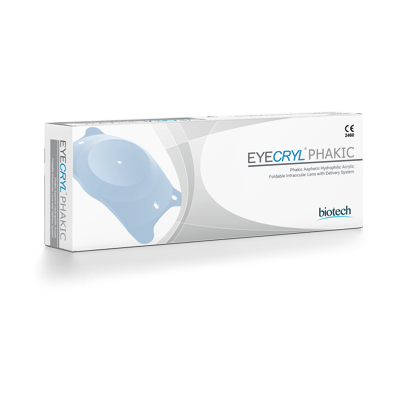- Home
- /
- OPHTHALMOLOGY
- /
- REFRACTIVE PRODUCT RANGE
Eyecryl Phakic
Phakic Aspheric Hydrophilic Acrylic Foldable Intraocular Lens
Eyecryl Phakic TORIC
Hydrophilic Acrylic Foldable Phakic Toric Intraocular Lens With Delivery System
Flavin
Isotonic Riboflavin Ophthalmic Solution
Flavin HY
Hypotonic Riboflavin Ophthalmic Solution without Dextran
Flavin TE
Trans-epithelial Riboflavin Ophthalmic Solution
Flavin H
Riboflavin Ophthalmic solution with Hypromellose
Bioring
Intra Stromal Corneal Ring
Optiject
IOL delivery system
Eyecryl Phakic
Phakic Aspheric Hydrophilic Acrylic Foldable Intraocular Lens
Eyecryl Phakic TORIC
Hydrophilic Acrylic Foldable Phakic Toric Intraocular Lens With Delivery System
Flavin
Isotonic Riboflavin Ophthalmic Solution
Flavin HY
Hypotonic Riboflavin Ophthalmic Solution without Dextran
Flavin TE
Trans-epithelial Riboflavin Ophthalmic Solution
Flavin H
Riboflavin Ophthalmic solution with Hypromellose
Bioring
Intra Stromal Corneal Ring
Optiject
IOL delivery system
No Products Found.

Eyecryl Phakic
Phakic Aspheric Hydrophilic Acrylic Foldable Intraocular Lens

Eyecryl Phakic TORIC
Hydrophilic Acrylic Foldable Phakic Toric Intraocular Lens With Delivery System

Flavin
Isotonic Riboflavin Ophthalmic Solution

Flavin HY
Hypotonic Riboflavin Ophthalmic Solution without Dextran

Flavin TE
Trans-epithelial Riboflavin Ophthalmic Solution

Flavin H
Riboflavin Ophthalmic solution with Hypromellose

Bioring
Intra Stromal Corneal Ring

Optiject
IOL delivery system


